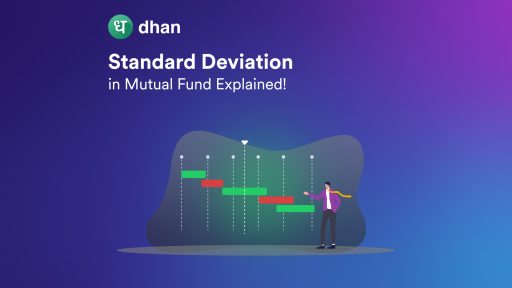It can be difficult to invest in Mutual funds and to understand which one is the best one in the market, especially if you are a beginner.
In this case, star ratings of mutual funds are helpful, providing a brief idea of a fund’s potential.
In this article, we will learn the basics of what is star ratings in mutual funds, the correlation to fund performance, the institutions that provide fund ratings, the methodology for calculating the rating, and much more. So, let’s start.
What is Star Rating in Mutual Funds?
Mutual fund star ratings are assessment indicators applied to funds for easier evaluation on investors’ end. These ratings, which typically range from 1 to 5 stars, represent the value and possible performance of a mutual fund.
Here is what each rating means:
1 Star: Poor performance with higher risk and lower potential returns
3 Star: Below-average performance in relation to other funds
3 Star: Average performance with moderate risk and return
4 Star: Above-average performance with higher potential returns
5 Star: A top performer with highest returns and successful risk management
The past performance of a fund is directly related to the star rating system. The fund with a higher star rating means a higher potential for investors and vice versa. This helps investors compare different mutual funds and make an informed decision.
For investors in search of an easy method to determine the potential profits and risk levels, star rating is an easy-to-use indicator.
Who Assigns the Star Ratings?
Usually, these ratings are assigned by professional rating agencies such as CRISIL, ICRA, MorningStar, ValueResearch, etc., who rate a fund based on various performance metrics.
They analyze both quantitative and qualitative aspects of a fund such as returns, volatility, investment ideologies, and adherence to the stated objectives of a fund.
These rating agencies play a crucial role by offering investors an impartial evaluation of a fund’s historical performance, while also considering the risk factor.
Not only this, but they also help to gain beneficial insights into the investment strategy, management team, and general market forecast of a fund.
How Are Mutual Fund Star Ratings Calculated?
The star ratings of mutual funds are determined with the help of mathematical calculations and an in-depth analysis of multiple factors. The main factors are mentioned below:-
Performance Metrics:
Key performance indicators that are considered by rating agencies include volatility, yearly returns, and risk-adjusted returns. The star rating of a fund is mostly based on its past performance, particularly during fluctuating market circumstances.
Risk-Adjusted Returns:
Risk-adjusted returns are often taken into consideration when assigning stars, which provides a deeper evaluation of a fund’s efficiency. Higher star ratings are generally awarded for funds that effectively mitigate risk while producing significant returns.
Peer Comparison:
Rating agencies assess a fund with competing funds in the same sector in addition to its past performance. Thus, it helps the Investors to know how a fund performs relative to other funds that have the same objectives and risk levels.
Tips for Investors Utilizing Star Ratings
Investors can follow the below-mentioned tips for utilizing star ratings.
Initial Screening:
Use star ratings as an initial filter to narrow down your investment choices. This helps you save time during the research process by allowing you to concentrate on funds that have previously performed well.
Performance Trend Analysis:
Analyze how stable the star ratings of a fund is throughout different periods. A fund with consistently high ratings may indicate stability, while ratings that fluctuate might suggest instability or fluctuations in the performance of the investment.
Think about the Risk Factors:
Recognize the risk profile linked to the star rating of a fund. Certain rating systems integrate risk-adjusted indicators, providing valuable insights into a fund’s performance and the level of risk involved.
Comparison with Peers:
Examine a fund’s star ratings in relation to those of similar funds in the same sector. This could help you determine which funds have a competitive advantage and help you find relative outperformers.
Take into account variables like portfolio turnover, expense ratios, and management style to find the best performers. Also, it helps us to know the sustainability and efficiency of other funds.
Staying Informed and Updated:
The performance of mutual funds can change with time. Investors need to be aware of any revisions or modifications to star ratings. Review your portfolio frequently, and make any necessary changes to your investment plan in light of updated information.
Balancing Star Ratings with Fund Objectives:
Star ratings should align with the specific investment goals of an investor. Given the possibility of increased risk, a five-star fund might not be ideal for every investor.
To ensure that the fund you choose fits properly with your overall investment objectives, take your time horizon, risk tolerance, financial health, and future prospects of the investment into consideration.
Conclusion
Star ratings provide investors with an easier way to navigate the complex landscape of mutual fund investing.
A thoughtful and informed approach to using star ratings can enhance an investor’s ability to make sound investment decisions in line with their financial goals.
Like this blog? Then you’ll love these:




